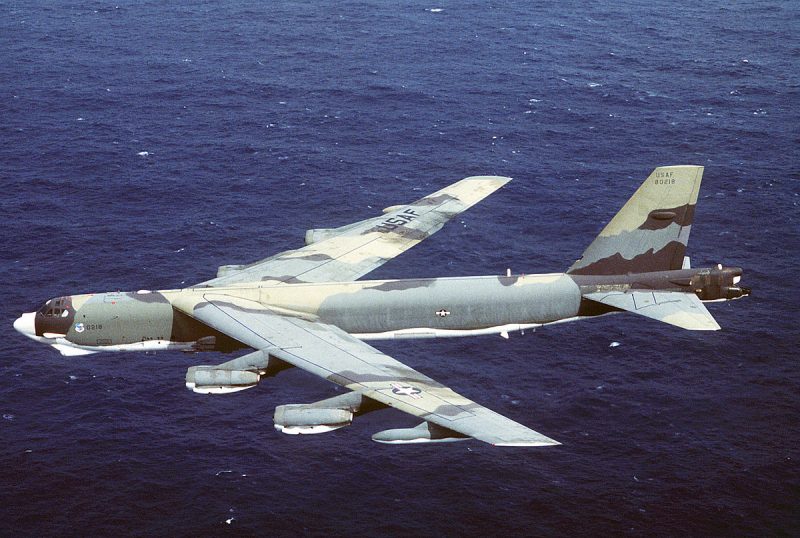“Mistakes are made in every other human endeavor. Why should nuclear weapons be exempt?”
-Arnold Schwarzenegger, former Governor of California in a letter to the Hoover Institute (2007)
You would think that a superpower such as the United States would be more careful about misplacing or damaging their items of mass destruction like nuclear weapons and the expensive associated hardware. But at the height of the Cold War in the 1950s and ’60s, this was exactly what they were appeared to be doing on a regular basis.
The US Air Force in 1956 carelessly mislaid some nuclear bombs and a 133,000lb-aircraft. It happened when four B-47 Stratojet bombers were on their way to an Air Force base in Morocco in North Africa. While they were over the Mediterranean Sea, one of the four aircraft disappeared.
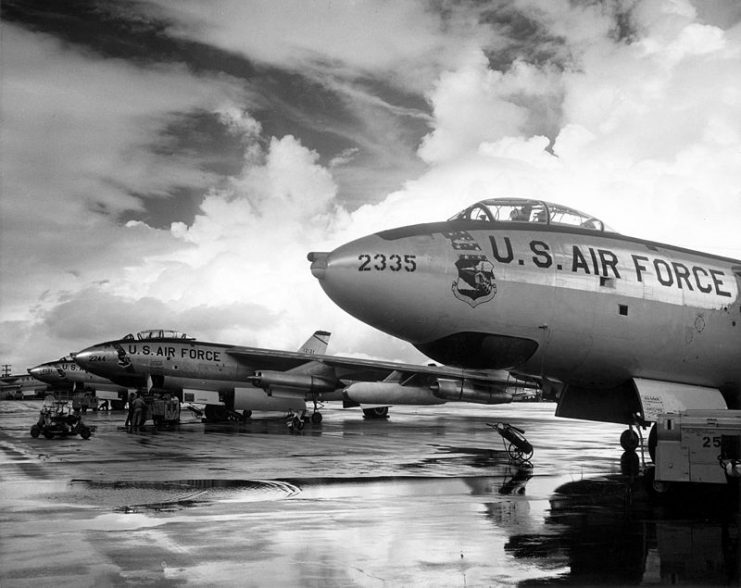
The aircraft and its three crew members, along with its two nuclear bombs, were never to be seen again.
You would have thought the US Air Force would have learned their lesson, but just two years later another nuclear-laden US B-47 Stratojet bomber collided with an F-86 Sabre fighter jet aircraft over a lake in Georgia in the United States.
The damaged bomber was forced to jettison the Mk15 7,600lb nuclear bomb it was carrying into a lake below. Despite extensive searches, the bomb was never found.
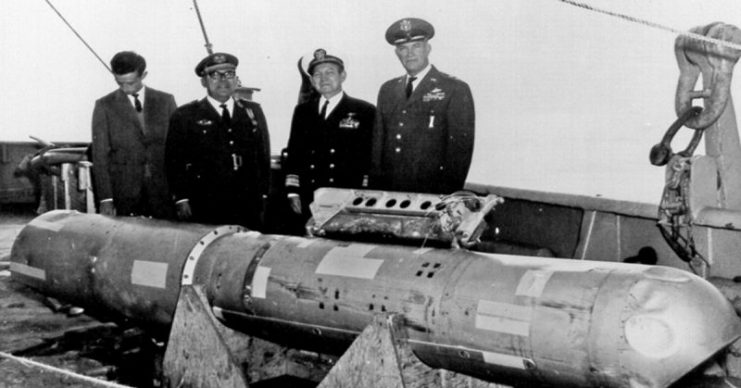
Even with the introduction of the new B-52G Stratofortress, mishaps continued to happen. In 1966, one of these bombers collided with an aerial tanker off the coast of Spain. This resulted in the death of seven of the eleven crew members and the loss of both aircraft.
All the B-52’s four Mk28 hydrogen bombs were later recovered, but not before they contaminated nearly one square mile of Spanish farmland and a residential area with low levels of radiation.
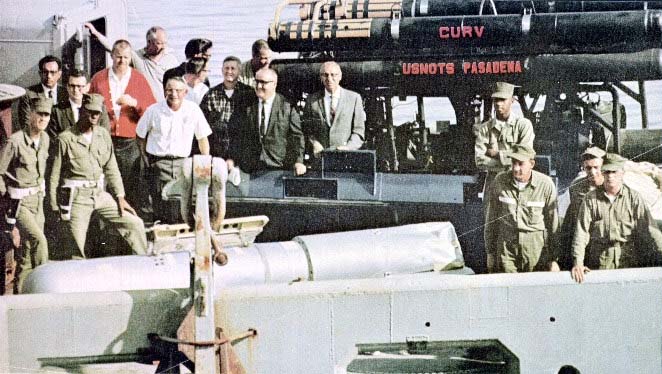
In 1968, once again the US Air Force inadvertently dropped some nuclear bombs on an ally.
When a B-52G bomber crashed near Thule Air Base, Greenland, while attempting an emergency landing after a fire had broken out onboard, its nuclear payload of four hydrogen bombs ruptured and caused widespread contamination of the local area.
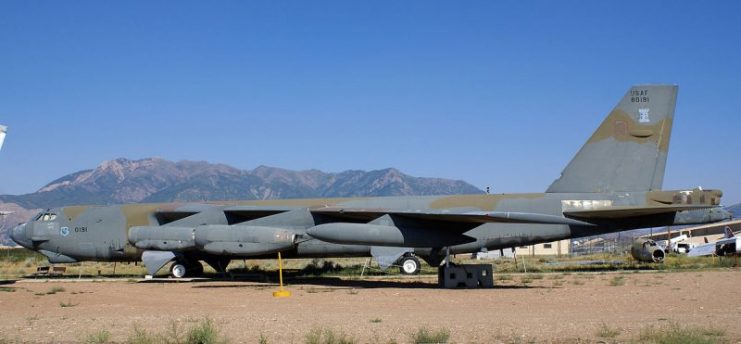
This led to an international row with Denmark, a US-NATO ally, as the Danish had banned nuclear weapons from being on any of its territories and Greenland is a Danish possession.
So, was the US Navy any better? Well, in 1963 they lost the USS Thresher nuclear-powered submarine with all its 129 crew on board while in the North Atlantic. This loss was thought to have been due to a salt-water piping system joint failure that caused the submarine to descend uncontrollably, eventually imploding.
The debris of the wreckage was estimated to have been spread across a 90-square-mile area of the sea bed.
A modicum of good came out of the loss of the USS Thresher disaster, which was that lessons were learned about the need for a strict and comprehensive maintenance program. With this in mind, the US Navy introduced the SUBSAFE maintenance program for its submarine fleet.
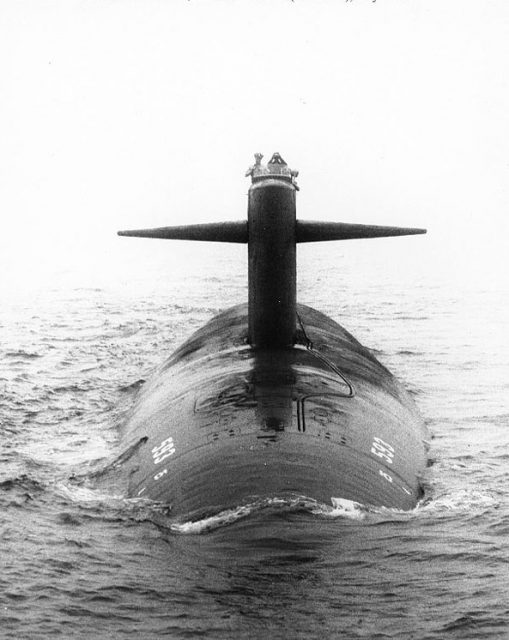
Sometimes the mishaps involved Naval aircraft, even if they weren’t flying at the time.
For example, in 1965, a US Navy Skyhawk attack aircraft armed with a 1-megaton hydrogen bomb simply rolled off the deck of the USS Ticonderoga and fell into the Pacific Ocean.
https://www.youtube.com/watch?v=mxJsFZY8bOI
The plane, pilot, and weapon sank into water 16,000ft deep off the coast of Japan, never to be seen again.
Even worse, the US Navy in 1968 lost another submarine: a 3,000-ton, 252ft-long Hunter Killer submarine armed with nuclear-tipped torpedoes.
This was the USS Scorpion, a Skipjack Class submarine. It was designated as an SSN-type vessel, meaning it was a nuclear-powered general-purpose attack submarine, primarily tasked with destroying other enemy submarines.
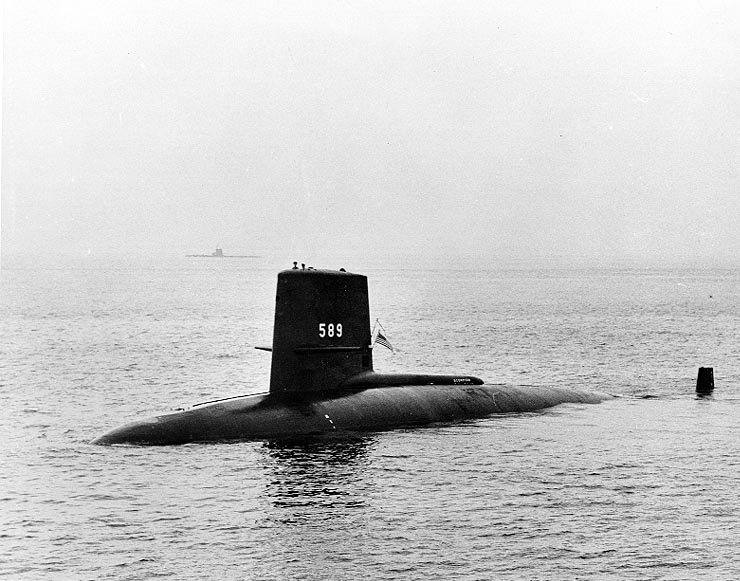
The Skipjack class were innovative and highly successful. They were incredibly fast (38mph submerged) and the fifth generation nuclear reactor was extremely reliable and had an excellent safety record.
The USS Scorpion entered US Naval service in 1960, and for the next seven years carried out standard Hunter Killer duties. It participated in patrols and exercises all over the North Atlantic as well as in European waters.
In 1966, the USS Scorpion took part in special operations when it is thought to have sneaked into Russian territorial waters to record a Soviet missile launch.
Then, in 1968, something of great significance and consequence happened. The USS Scorpion went in for a full overhaul involving the new SUBSAFE maintenance program. This should have taken about 36 months to complete.
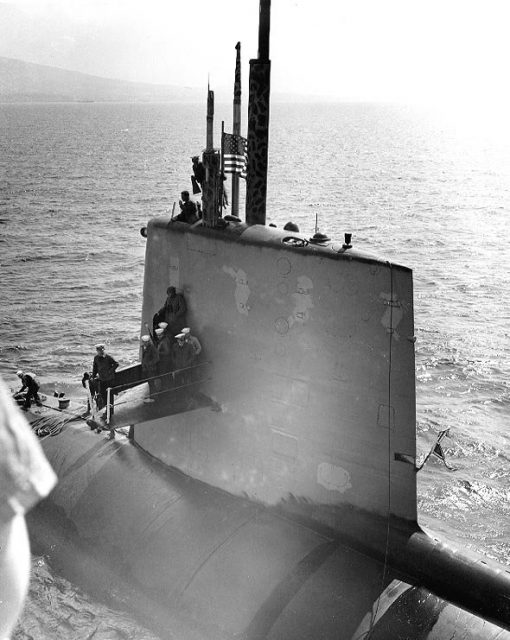
But such was the pressures of the Cold War and the shortage of US Hunter Killer submarines that the work was reduced to a basic overhaul of less than nine months. Consequently, shortcuts were made and long overdue upgrades were not implemented, like adding a new central valve control system which not deemed to be urgent.
In 1968, after refresher training and deployment with the US 6th Fleet in the Mediterranean Sea, the USS Scorpion headed to the Azores archipelago in the North Atlantic to observe a large Soviet Task Force.
On the way, the submarine suffered various system malfunctions including a water leak that started a small electrical fire, a faulty seal on its propeller shaft, oil leaks from its hydraulics, unstable control surfaces, and leaks of poisonous freon coolant.
But none of these hindered the USS Scorpion’s operational ability.
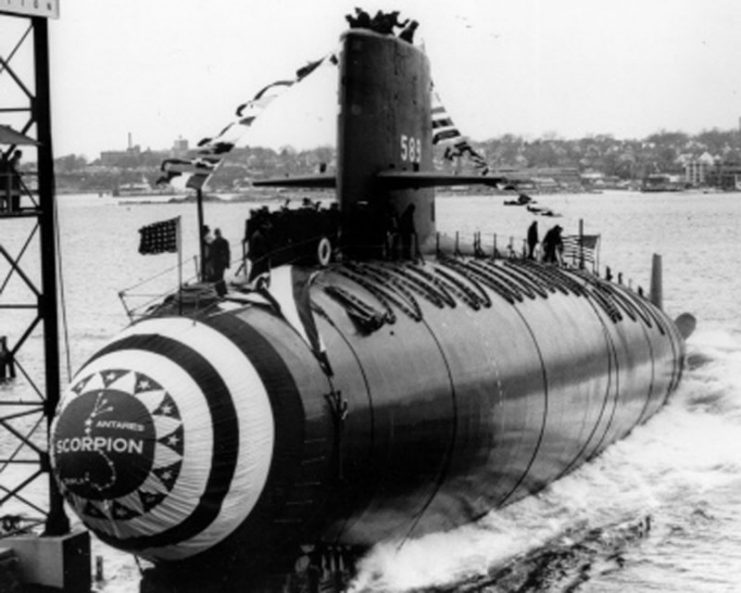
The submarine completed its mission of observing the Soviet Task Force that included a giant Echo II, which was an anti-carrier missile submarine that dwarfed the Skipjack class submarine being over 120ft longer (378ft long).
After that, on May 20, 1968, the USS Scorpion departed the area to head to its home port at the Naval Station Norfolk, Virginia on the East coast of America.
Virtually straight-away it started to suffer from communication problems which continued for the next 24 hours. Messages were relayed to the Naval Communications station in Nea Makri, Greece as the USS Scorpion could not raise the Naval Station Norfolk.
In the last message received from the USS Scorpion, its commander reported he had sighted a Soviet submarine and was closing in so that he could investigate further.
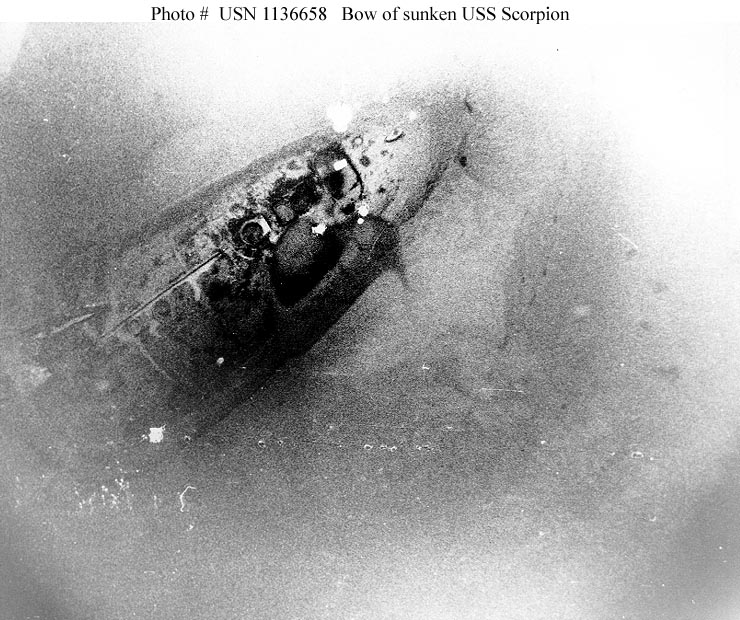
The USS Scorpion crew was never heard from again. Six days later, on May 27, the submarine was declared overdue, and on June 5, it was officially marked down as presumed lost along with its crew of 99 men.
An extensive search was carried out, but the submarine was not located until late October of that year (1968).
The submarine was found 460 miles south-west of the Azores at a depth of nearly 10,000ft, well below the craft’s crush depth. Submarines of that era could rarely survive depths of a little over 1,000ft before structural failure set in due to the intense water pressure.
By the time it had hit the sea bottom, the USS Scorpion had broken up and suffered extensive pressure damage with several parts of the submarine being severely crushed.
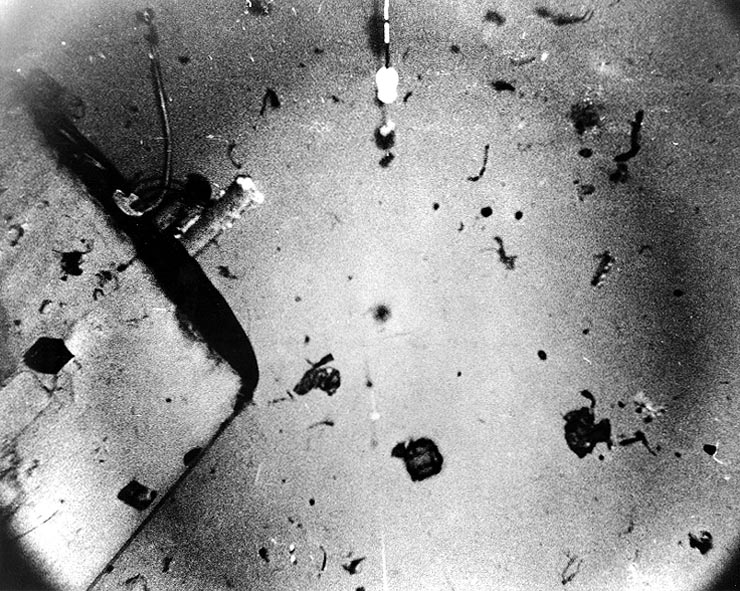
Later that year, there was a US Naval Court of Inquiry followed by an extensive Naval Ordinance Laboratory report in 1970.
The US Naval Court of Inquiry concluded that the exact cause which led to the loss of the USS Scorpion could not be established due to lack of solid facts. But sabotage or the nearby Soviet submarine being involved were ruled out.
At first, the Inquiry favored the theory that the USS Scorpion had broken in two at around 1,500ft when it was thought a conventional torpedo prematurely detonated while still in the submarine.
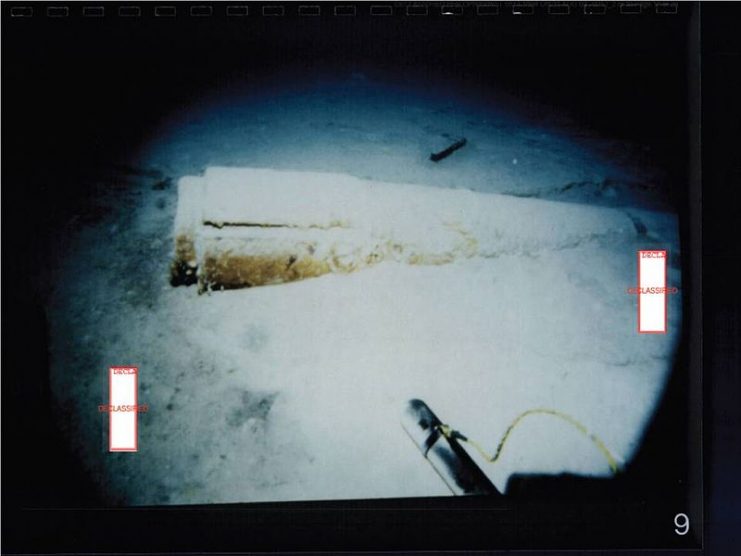
However, later on, the Naval Ordinance Laboratory report came to a slightly different conclusion which was that the USS Scorpion broke up at a much deeper depth of around 2,000 feet and that there had been no explosion involved. However, the report also could not come up with an exact cause for the loss of the USS Scorpion.
The Navy rejected the report’s conclusions and, to this day, maintains the loss of the submarine was due to some kind of internal explosion.
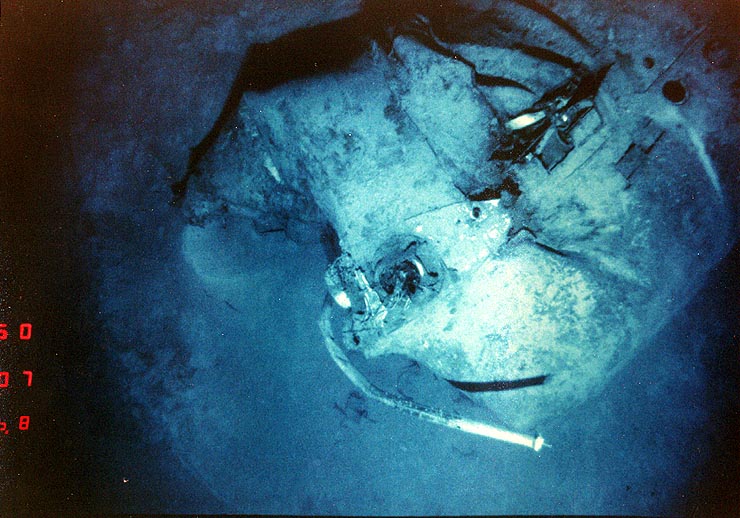
In the 40 years since the accident, the site has regularly been monitored by the US Navy for radiation. None has been found despite the fact the submarine was carrying two nuclear-tipped Mk45 anti-submarine torpedoes (ASTOR) and was powered by a nuclear reactor.
It is believed that should the corroded radioactive material escape the submarine, it would simply sink to the bottom of the sea due to its heavy density and insolubility. Therefore, there would be no significant risk posed to anyone or the environment.
Read another story from us: Silent Service Game Changers – The Advent of Nuclear-Powered Submarines
The other five submarines in the Skipjack class of submarine went on to have 30 years of active service, with no further loss and an excellent safety record. In fact, no US submarine has been lost in the last 50 years since then.
And though the US nuclear weapon stockpile has shrunk dramatically in recent years, as of 2019, they still have in their arsenal a little over 6,500 nuclear weapons. So there is still the possibility they might occasionally lose, drop, or misplace one or two of these nuclear devices every now and again, given their history in this area.
